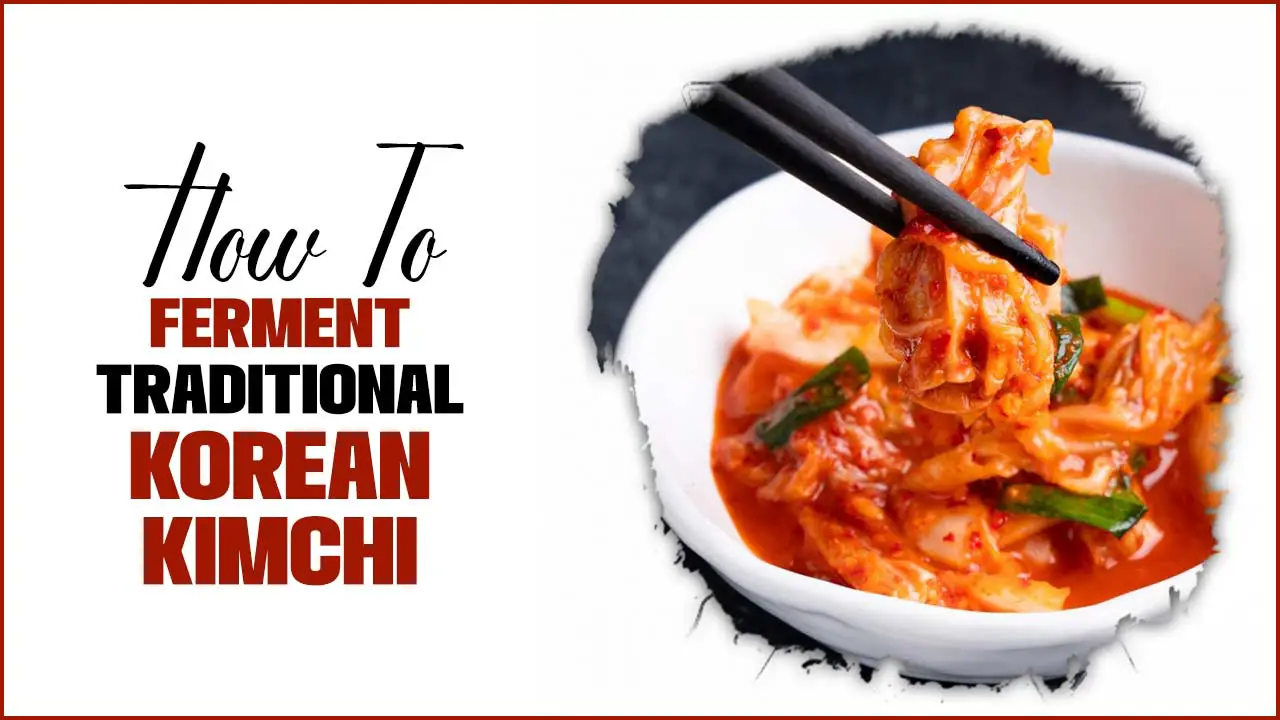Kimchi is a staple in Korean cuisine that has been enjoyed for centuries. This traditional dish is made by fermenting vegetables with a variety of seasonings, creating a unique and complex flavor.
Kimchi is packed with probiotics and other nutrients, making it a healthy addition to any diet. However, making kimchi at home can seem intimidating, especially for those who have never fermented food. This is why we have created how to ferment traditional Korean kimchi.
We will take you through every step of the kimchi-making process, from selecting the right vegetables to fermenting and storing the finished product. We will provide you with a detailed list of ingredients and techniques needed to make a successful batch of kimchi. However, we will also share tips and tricks to help you perfect your kimchi recipe, including adjusting the flavor to suit your preferences.
What Is Kimchi?
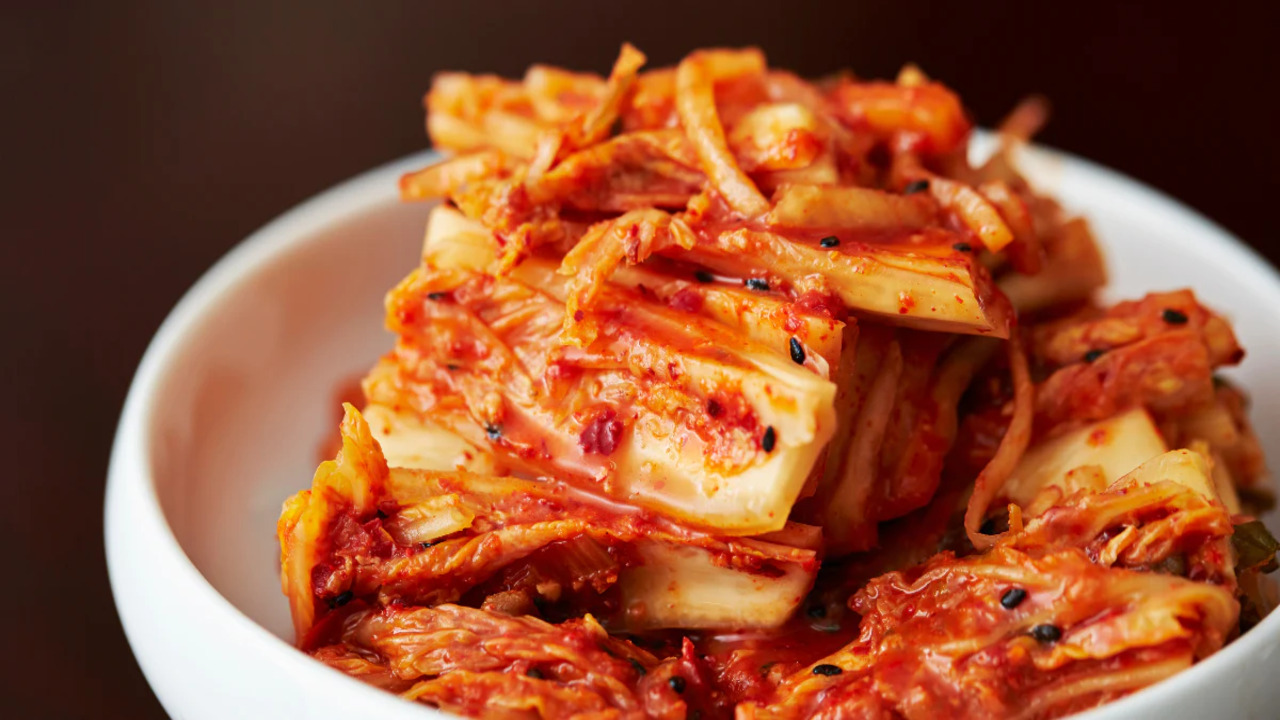
People have enjoyed kimchi, a traditional Korean dish, for centuries. It is a fermented vegetable dish with cabbage, radishes, and seasonings like garlic, ginger, and chili pepper flakes. The fermentation process gives kimchi its distinct tangy flavor and helps to preserve the vegetables.
Kimchi is delicious and packed with nutrients and probiotics, making it a popular choice for those seeking a healthy and flavorful addition to their meals. Whether enjoyed as a side dish or as an ingredient in various dishes, kimchi is a versatile and beloved staple of Korean cuisine.
How To Ferment Traditional Korean Kimchi Easy Ways
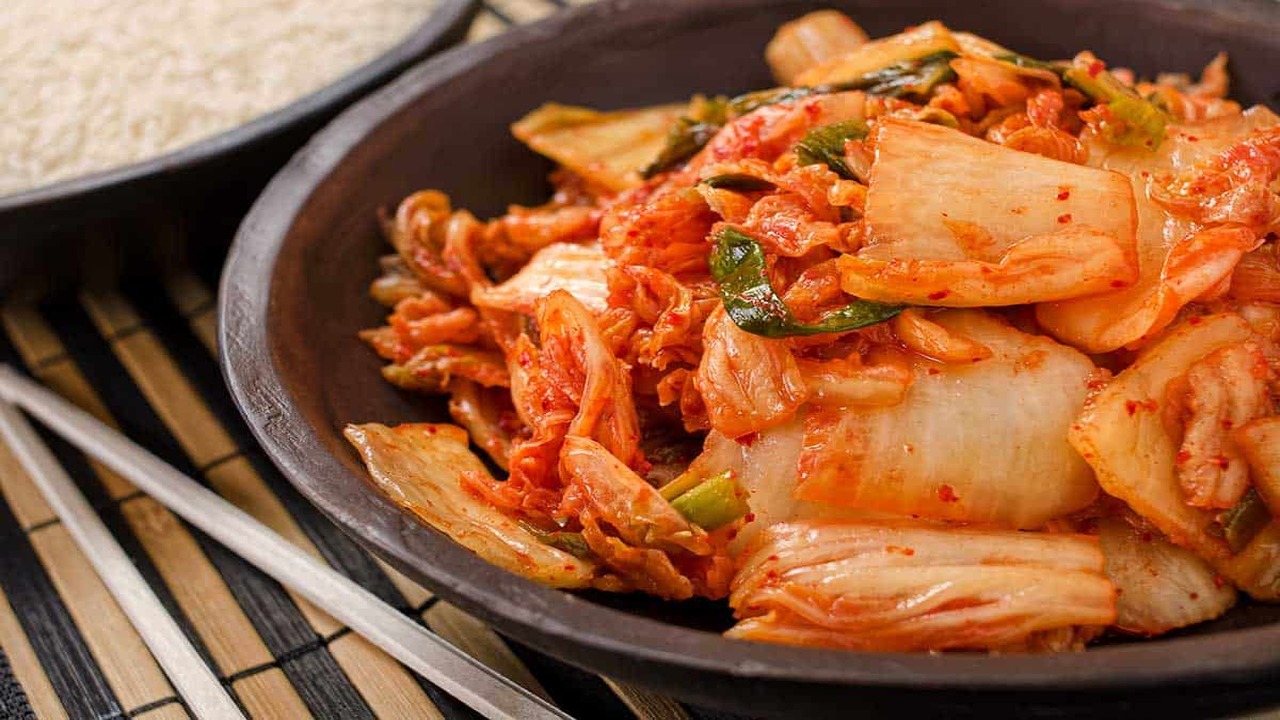
Fermenting traditional Korean kimchi is easier than you might think. While the process can seem intimidating. People have been enjoying traditional Korean Kimchi, which is a staple in Korean cuisine, for centuries. People make kimchi from fermented vegetables like cabbage and radishes and flavor it with a mixture of spices and seasonings, giving it its tangy and spicy taste. Here’s How to Ferment Traditional Korean Kimchi the easy way:
- Prepare the ingredients: Start by gathering all the ingredients for making kimchi, including napa cabbage, radishes, scallions, garlic, ginger, red pepper flakes, and fish sauce (optional for non-vegetarian versions).
- Rinse and salt the cabbage: Cut the napa cabbage into quarters and rinse thoroughly under cold water. Sprinkle salt on each leaf and let it sit for about 2 hours to absorb excess moisture.
- Make the kimchi paste: While the cabbage is salting, prepare it by blending garlic, ginger, red pepper flakes, and fish sauce (if using) in a food processor until it forms a smooth paste.
- Rinse and drain the cabbage: After 2 hours, rinse the excess salt from the leaves under cold water. Squeeze out any remaining moisture and set aside.
- Mix in the paste: Combine the rinsed cabbage with the kimchi paste in a large mixing bowl. Massage the paste into each leaf using your hands or gloves, ensuring an even coating.
- Fermenting: Transfer the kimchi mixture into a clean glass jar or fermentation crock. Press down firmly to remove any air bubbles and submerge all the kimchi in its liquid. Leave about an inch of headspace at the top of the jar.
- Let it ferment: Seal the jar tightly and sit at room temperature for 1-5 days to allow fermentation.
Tips For The Perfect Kimchi Fermentation
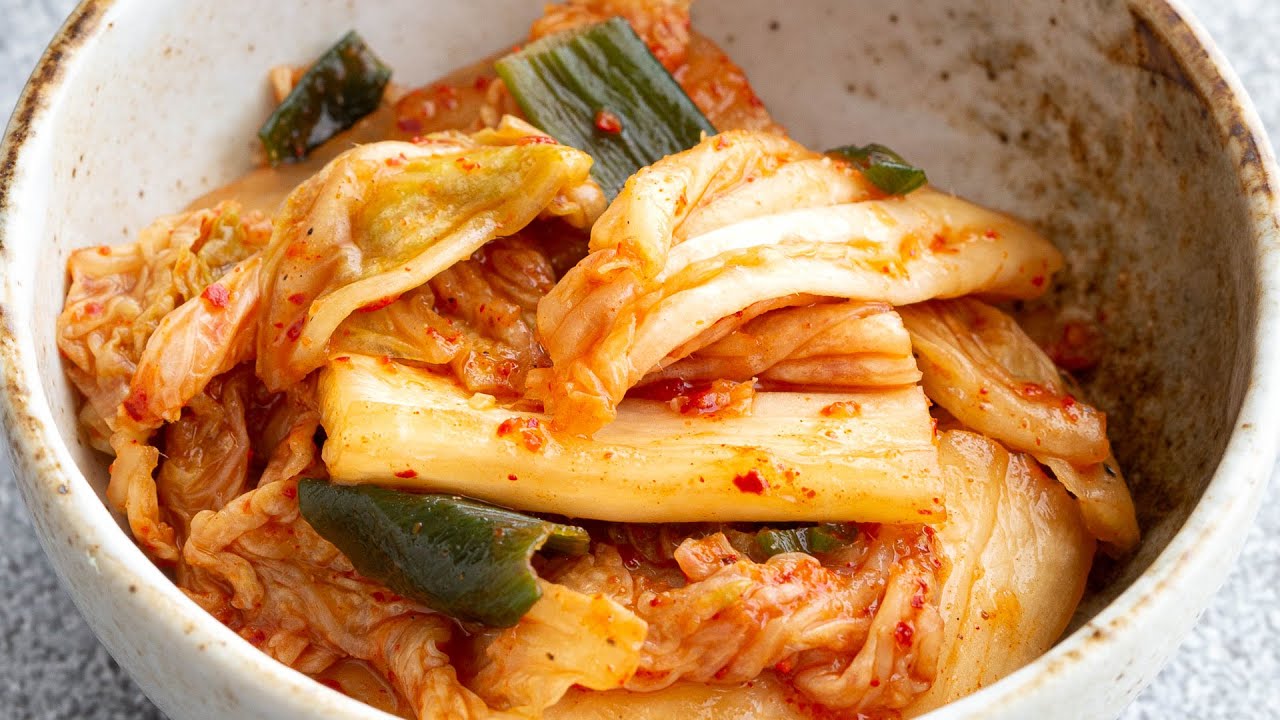
Fermenting traditional Korean kimchi requires patience and attention to detail, but you can achieve the perfect fermentation process with the right tips. By following these tips, you’ll be well on your way to achieving the perfect kimchi fermentation, resulting in a flavorful Here are some tips to help you:
- Use high-quality ingredients: To ensure a delicious and successful fermentation, start with fresh and high-quality vegetables, such as napa cabbage, radishes and carrots. The quality of your ingredients will greatly affect the taste and texture of your kimchi.
- Salt your vegetables properly: Salting vegetables is an important step in the kimchi-making process, as it helps draw out moisture and creates an ideal environment for fermentation. Distribute the salt evenly and massage the vegetables to ensure proper coating.
- Allow for proper air circulation: During fermentation, gases will be released, so it’s important to allow proper air circulation by covering your fermenter loosely or using an airlock system. This will prevent any unwanted pressure build-up and ensure a successful fermentation.
- Find the ideal temperature: Kimchi ferments best between 55°F and 70°F (13°C-21°C). Note that higher temperatures speed up the fermentation process while lower temperatures slow it down. Find a cool place in your home, or use a fermentation chamber to maintain the desired temperature range.
- Taste testing along the way: Kimchi flavors develop during fermentation, so taste testing is essential to determine when it has reached your desired level of tanginess and complexity. Start tasting a few days after fermentation and continue until you are satisfied with the taste.
The Benefits Of Eating Fermented Kimchi
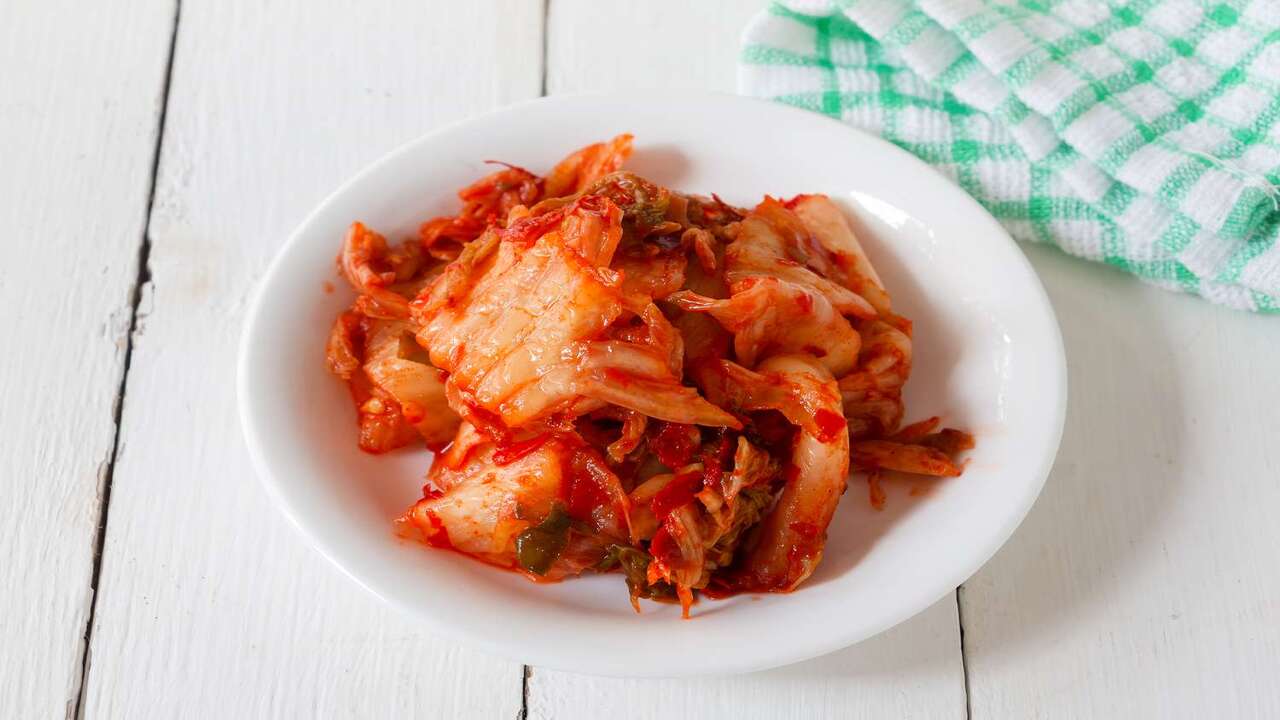
Fermented kimchi, the staple of traditional Korean cuisine, offers many benefits for your overall well-being. This beloved dish, made by fermenting a mixture of napa cabbage, radish, ginger, fish sauce, and other flavorful ingredients, is delicious and packed with nutrients and probiotics.
The fermentation process involved in making kimchi promotes the growth of beneficial bacteria, supporting a healthy gut and improving digestion. With its rich lactic acid bacteria and probiotics content, fermented kimchi has been linked to improved immune function and reduced inflammation. Additionally, kimchi can help regulate blood sugar levels and support weight loss.
Its unique tangy flavor, derived from fermentation, enhances various dishes, from kimchi fried rice to tacos. Incorporating fermented kimchi into your meals allows you to savor its unique blend of flavors while reaping its numerous health benefits.
What Kind Of Vegetables Can Be Handy For Kimchi?
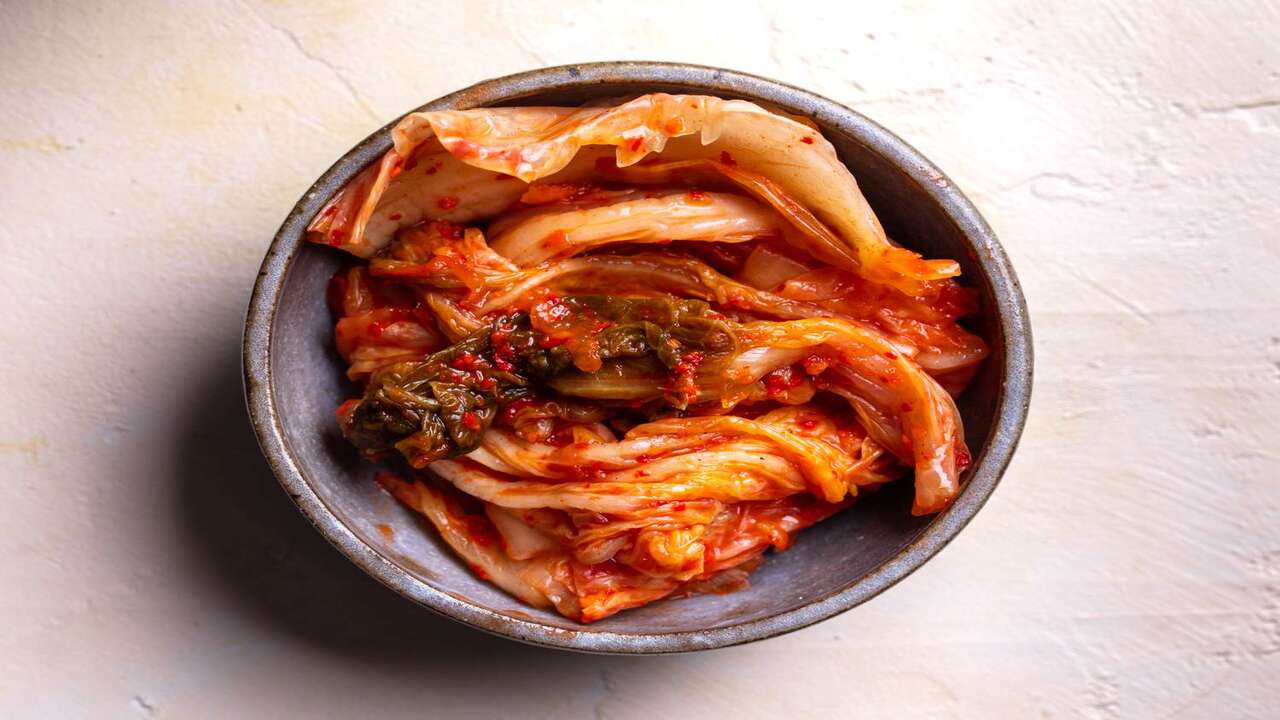
To make traditional Korean kimchi, a variety of vegetables can be handy. The most common vegetable used in kimchi is Napa cabbage, which provides a crisp and crunchy texture. Other popular options include radishes, carrots, and scallions, adding flavours and colours to the kimchi.
Some people even like to experiment with other vegetables like cucumbers or bok choy to create unique variations of kimchi. Ultimately, the choice of vegetables is up to personal preference and experimentation. Just make sure to properly prepare and season the vegetables before fermenting them to achieve that signature tangy and spicy flavor of kimchi.
Conclusion
Kimchi is a traditional Korean dish that has gained popularity worldwide for its unique flavors and health benefits. By fermenting kimchi, you can create a tangy and flavorful condiment that not only adds a punch to your meals but also provides numerous health benefits. The benefits of eating fermented kimchi are plenty, from improving digestion to boosting immunity.
Whether you’re new to making kimchi or looking to perfect your fermentation process, our ultimate guide on how to ferment traditional Korean kimchi has got you covered. Use caution when handling and storing your kimchi, as it can be quite pungent. With patience and practice, you will soon become a master kimchi fermenter and enjoy this Korean staple in the comfort of your own home.
Frequently Asked Questions
1.How Is Kimchi Traditionally Fermented?
People traditionally combine vegetables like napa cabbage and radishes with salt, garlic, ginger, and chili pepper flakes to make kimchi. Leave the mixture to ferment at room temperature for several days, allowing lactic acid bacteria to convert sugars into lactic acid and develop its tangy flavor. Storing kimchi in airtight containers during fermentation helps prevent spoilage and control the level of fermentation.
2.How Long Is Traditional Kimchi Fermented?
Ans: People ferment traditional kimchi for a period of several days. The duration of fermentation varies based on personal taste and desired sourness. Tasting the kimchi during fermentation is advisable to decide when it has achieved the desired flavor. Refrigeration can slow down further fermentation after it has occurred.
3.How Do You Ferment Fresh Kimchi?
Ans: Transfer the fresh kimchi to a sealed container, press it down to remove air bubbles, and submerge it in its juices to ferment it. Let it sit at room temperature for 1-2 days before fermentation. Once fermented to your liking, refrigerate to slow down the process.
4.What Type Of Fermentation Is Handy For Kimchi?
Ans: People traditionally make kimchi using lactic acid fermentation, where natural bacteria convert sugars into lactic acid. This process takes 1-5 days and relies on temperature and salt concentration. It’s crucial to follow a reliable recipe to ensure successful fermentation.
5.What Ingredients Are Needed To Make Traditional Korean Kimchi?
Ans: The ingredients needed to make traditional Korean kimchi include napa cabbage, radishes, scallions, garlic, ginger, and chili pepper flakes. Fish sauce, salted shrimp paste, and sugar are also commonly handy. You can add additional vegetables or fruits like carrots, cucumbers, or apples based on personal preference and regional variations.

I’m a writer and blogger who loves to talk about entertainment, culture, and relationships. I love to share my thoughts and insights on these topics, and I’m always looking for new ways to engage with my readers. I’m also a big fan of learning new things, so I’m always exploring new areas of interest.

